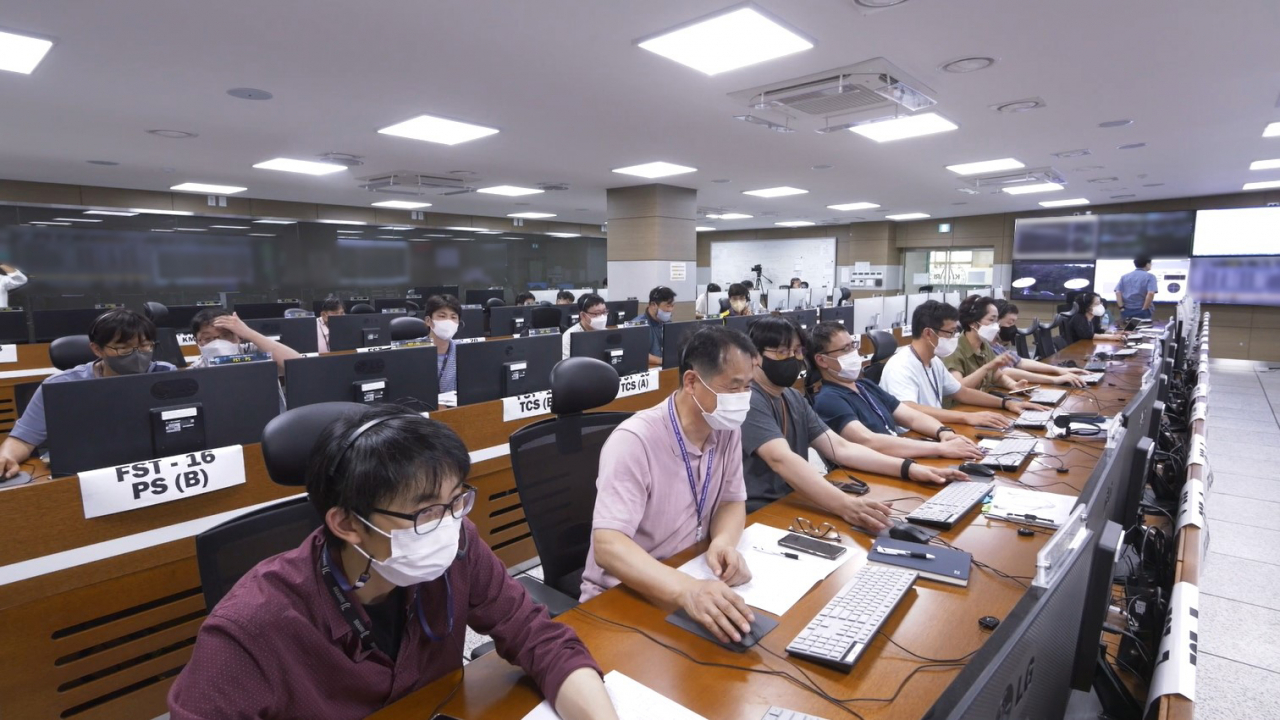S. Korean lunar orbiter's key trajectory maneuver proceeds successfully: KARI
By YonhapPublished : Sept. 5, 2022 - 09:45

South Korea's unmanned space vehicle Danuri has successfully undergone a trajectory correction maneuver (TCM), a critical procedure in the lunar orbiter's travel to the moon for the country's first lunar mission.
Danuri, also known as the Korea Pathfinder Lunar Orbiter, was launched last month aboard a SpaceX Falcon 9 rocket from Cape Canaveral Space Force Station in the U.S. state of Florida for South Korea's first space mission beyond Earth's orbit.
The orbiter is currently on its way to the moon on a ballistic lunar transfer trajectory -- which takes the vehicle toward the sun before looping back to arrive at the moon's orbit in December. The route, while much longer than traveling directly toward the moon, is more fuel efficient as it uses the sun's gravity for travel.
The state-run Korea Aerospace Research Institute (KARI) said it conducted the TCM at around 5 p.m. on Friday, in which Danuri's direction, position and speed were readjusted to head back toward the moon.
KARI said it confirmed the TCM's success at around 6 p.m. Saturday. The maneuver was carried out at Lagrange Point 1, where the gravitational pulls of the sun and Earth are at equilibrium.
The institute added it decided not to conduct a follow-up TCM that was initially planned for Sept. 16, as it was determined unnecessary based on Danuri's current travel status.
Danuri will measure terrains, magnetic strengths, gamma rays and other traits of the lunar surface using six onboard instruments during its yearlong mission starting in January. The orbiter will also identify potential landing sites for future lunar missions. (Yonhap)












![[Today’s K-pop] BTS pop-up event to come to Seoul](http://res.heraldm.com/phpwas/restmb_idxmake.php?idx=644&simg=/content/image/2024/04/17/20240417050734_0.jpg&u=)





![[KH Explains] Hyundai's full hybrid edge to pay off amid slow transition to pure EVs](http://res.heraldm.com/phpwas/restmb_idxmake.php?idx=652&simg=/content/image/2024/04/18/20240418050645_0.jpg&u=20240419100350)

![[Today’s K-pop] Zico drops snippet of collaboration with Jennie](http://res.heraldm.com/phpwas/restmb_idxmake.php?idx=642&simg=/content/image/2024/04/18/20240418050702_0.jpg&u=)